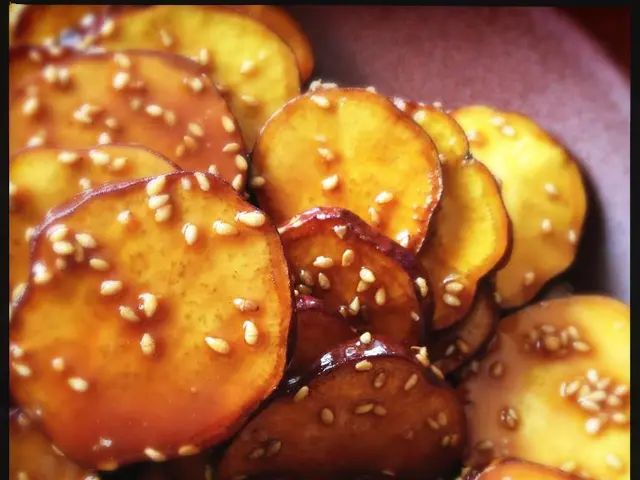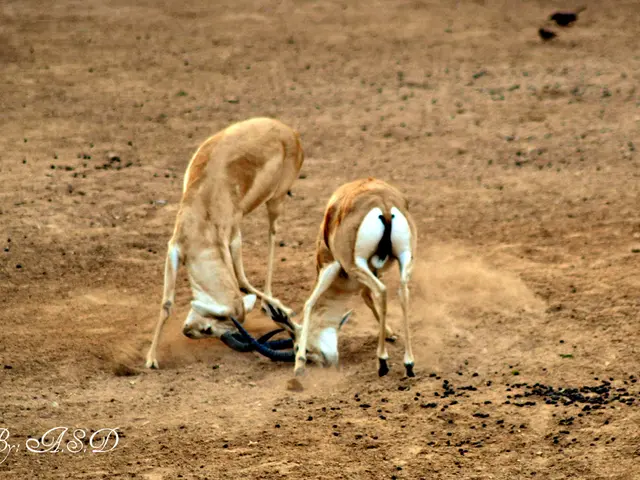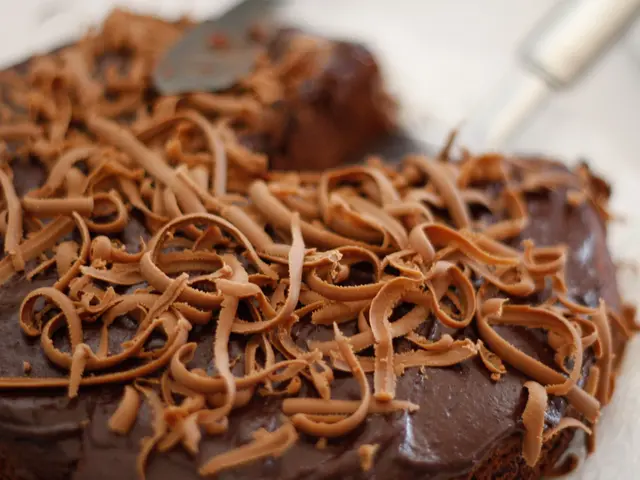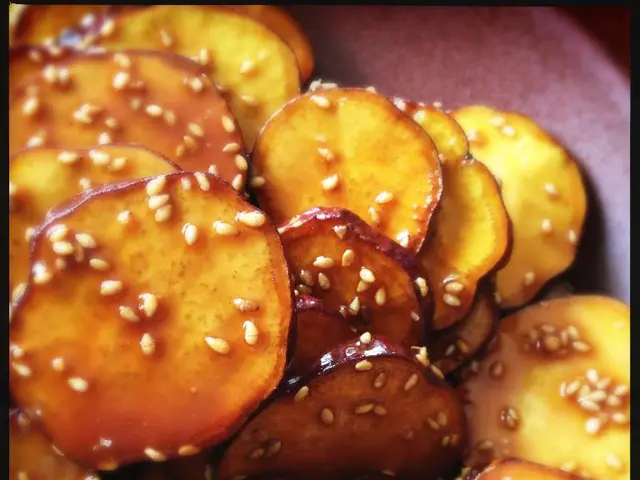The Lowdown on Crunchy Pickles
Strategies for Creating Crisp Pickles (Including a Recipe)
Get ready to impress with your homemade pickles! Whether you're a burger lover or just enjoy a tangy snack, crunchy pickles are the way to go. But these little gems can quickly turn soft and disappointing if you don't know the tricks. Let's dive in!
Why the Crispiness Disappears
It's a common issue: you open the jar of pickles you've been eagerly waiting for, only to find that they've lost their satisfying crunch. The culprit? Enzymes within the cucumber that break down its structure, making it softer by the day. But we've got your back!
How to Achieve Crunchy Pickles
With a bit of planning and some smart techniques, you can keep your pickles crisp and crunchy! Here are ten top tips, both for pickling and fermented pickles:
- Harvest Fresh: Pick cucumbers as soon as possible after they've matured. Opt for small, firm pickling cucumbers like Kirby or Lebanese for the best results.
- Cut off the Ends: Remove the stems and flowers before pickling to minimize softening enzymes.
- Ice Water Soak: Soak cucumbers for a few hours in ice water to help rehydrate them, especially if they've lost moisture during storage or transport.
- Calcium Chloride: Add calcium chloride to your brine or fermentation mixture as it helps preserve the crunchiness of food. Use 1/4 to 3/4 tsp. per 1L jar.
- Tannin Source: Include a source of tannins, such as grape leaves, oak leaves, or raspberry leaves, in your fermentation vessel.
- Balanced Salt Concentration: Use enough salt to maintain crispness, but be mindful not to overdo it. Aim for 1.5 to 2 tbsp. salt per 1L jar.
- Skip the Backslopping: Avoid adding bacteria during fermentation, as it can make pickles softer more quickly.
- Keep Fermentation Short: Limit fermentation to 5 to 8 days at room temperature before refrigerating.
- Cool Room: Ferment your pickles in a cool room or basement to maintain an ideal temperature of around 17°C.
- Checklist Time: Not every tip has to be applied - find the combination that works best for you. Here are two examples:
- "Less Salty, More Crunchy"
- Small, firm cucumbers
- Soak for 3 hours in cold water
- Cut off cucumber ends
- 1.5 tbsp. salt (25g) per 1L jar
- 1/4 tsp calcium chloride
- 7 days of fermentation on the countertop
- "Traditional Method"
- Fresh garden-picked cucumbers
- Soak for 3 hours in cold water
- Cut off cucumber ends
- One grape leaf per jar
- 2 tbsp. salt (30g) per 1L jar
- 10 days of fermentation in the cold room
- "Less Salty, More Crunchy"
Ready to Pickle?
Now that you're in the know, try out our crunchy pickles recipe with garlic below! And don't forget to check out our comprehensive guide on making lacto-fermentations for all the details.
Crunchy Pickles Fermented with Garlic Recipe
Equipment
- 1L glass jar (Le Parfait)
- 1 ViscoDisc Insert with large opening
Ingredients
- 7 freshly picked pickling cucumbers
- 3 garlic cloves
- 1 1/2 tbsp salt
- 1/4 tsp calcium chloride
- 1 tsp pickling spice or dried dill
- water
Instructions
Soaking
- Cut the ends, stems, and flowers off the cucumbers.
- Place the cucumbers in an ice water bath. Leave to soak for at least 3 hours.
Preparation
- Place the salt, calcium chloride, spices, and garlic cloves in the jar.
- Pile the cucumbers vertically.
- Add water until the cucumbers are covered.
- Place the insert on top of the cucumbers, folding the flaps upwards.
- Secure the lid and gently shake the jar to dissolve the salt. Replace the insert if necessary.
Fermentation
- Allow the jar to ferment in a cool room for 7 days.
- Refrigerate.
Notes
Enjoy your crunchy pickles in your burgers, sandwiches, with a raclette, or straight from the jar!
Frequently Asked Questions
My Pickles Are Soft, Can I Make Them Firmer?
Unfortunately, if you start with a soft or soggy cucumber, there's no hope of remission. The pickle is destined for softness.
Why Has the Garlic in My Pickles Jar Turned Blue?
Don't worry! It's normal for garlic to turn blue during fermentation. It's caused by a molecule in the garlic reacting with the acidity.
Can I Add Boiling Water to Cucumbers to Keep Them Crunchy?
Avoid pouring boiling water over cucumbers or blanching them, as it destroys the enzymes and microorganisms needed for fermentation.
Can I Use Alum to Make Fermented Pickles?
Alum can be dangerous in large quantities, so we prefer not to use it in lacto-fermentation.
Can I Use Lime to Make Lacto-Fermented Pickles?
Lime has been used in the past, but it can affect the acidity of the mixture and should be avoided if possible. Calcium chloride is a safer and more effective choice.
What Should I Do with Soggy Pickles?
Don't despair! If your lacto-fermented pickles have become soft and mushy, chop them up and mix them with a bit of sugar to create a homemade relish. Alternatively, use the brine to deglaze vegetables, marinate tofu, or make "gut shots."
Get the Tools!
Check out our recommended tools for making crispy pickles:
- Dill Pickles Recipe
- Cucumber Kimchi Recipe
- Carrots with Garlic and Dill Recipe
- Which Vegetables are Difficult to Ferment?
- Buy Vegetable Fermentation Equipment
- Buy a Pickle Kit
- To maintain your pickles' crunchiness and enhance the health benefits, consider incorporating a 'lifestyle' approach by pairing your pickles with 'food-and-drink' choices that align with a balanced 'health-and-wellness' diet, such as a whole grain burger or a tangy yogurt dip.
- As you explore the art of pickling, don't forget that 'science' plays a vital role in understanding the fermentation process. An in-depth study of microbiology and brine chemistry can help you create your own unique pickling concoctions tailored to your taste preferences and specific health goals.








